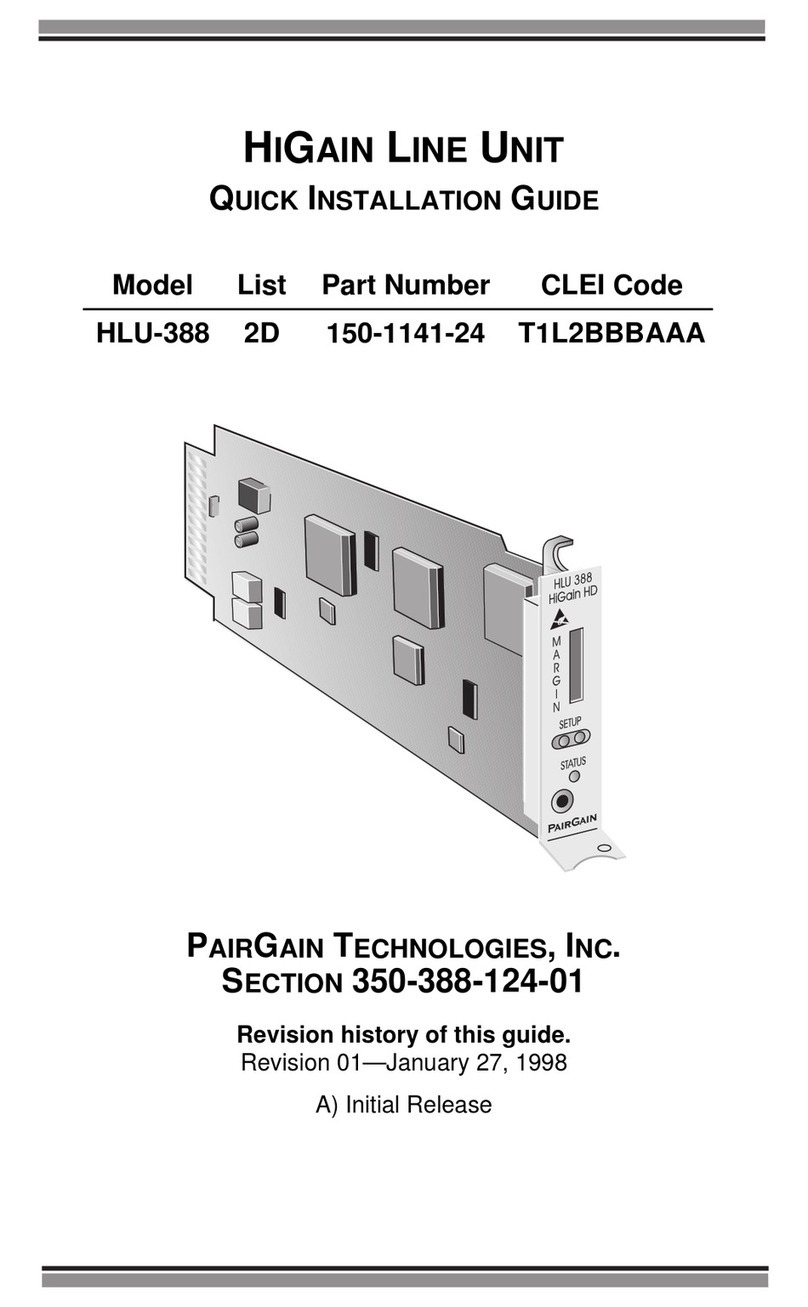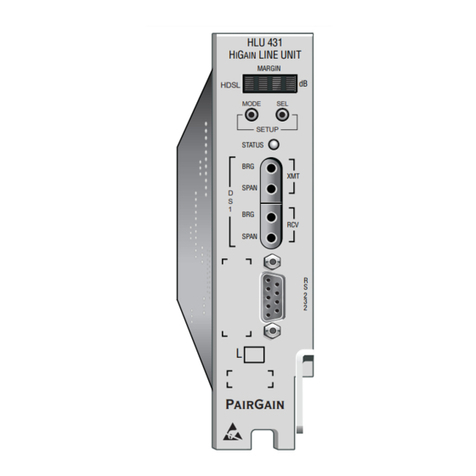
Table of Contents 150-231-175-01, Revision 01
vi September 23, 1998 HLU-231 List 7E
System Settings ............................................................................................................................... 20
DS0 Blocking Option........................................................................................................ 21
DS1 Line Code Option...................................................................................................... 21
Margin Alarm Threshold .................................................................................................. 22
HAIS Selections................................................................................................................ 22
HDSL Line Voltage Operation ......................................................................................... 22
Ground Fault Detect.......................................................................................................... 23
System Settings Screen Options ....................................................................................... 23
Loopback Menu............................................................................................................................... 25
Loopback Menu: No Doubler........................................................................................... 26
Loopback Menu: Two Doublers ....................................................................................... 26
Initiating a Loopback........................................................................................................ 27
Disable Loopbacks............................................................................................................ 27
Performance Data Screens............................................................................................................... 28
Performance Data Screen: No Doubler............................................................................. 29
Performance Data Screen: With Doubler.......................................................................... 29
View Performance History.............................................................................................................. 30
The 7 Day History Screen: No Doubler............................................................................ 31
The 7 Day History Screen: With Doubler......................................................................... 31
View Alarm History ........................................................................................................................ 32
Alarm History Screen: No Doubler .................................................................................. 33
Alarm History Screen: With Doubler ............................................................................... 34
Circuit ID......................................................................................................................................... 34
System Alarms_______________________________________________________________________ 35
Retiring System Alarms .................................................................................................................. 35
Self Test........................................................................................................................................... 36
Loopback Operation__________________________________________________________________ 36
SmartJack (SMJK) Loopback.......................................................................................................... 36
Generic Loopback Code (GNLB) ................................................................................................... 36
Addressable Repeater Loopback Functions .................................................................................... 37
Initiating Manual Loopback Sessions .............................................................................................37
Loopback Test Procedures .............................................................................................................. 38
Loopback Operation without Doublers........................................................................................... 39
Loopback Operation with Doublers................................................................................................39
GNLB Loopback Test Procedures...................................................................................................41
A1LB, A2LB, and A5LB Test Procedures ....................................................................... 41
A3LB and A4LB Test Procedures .................................................................................... 44

































